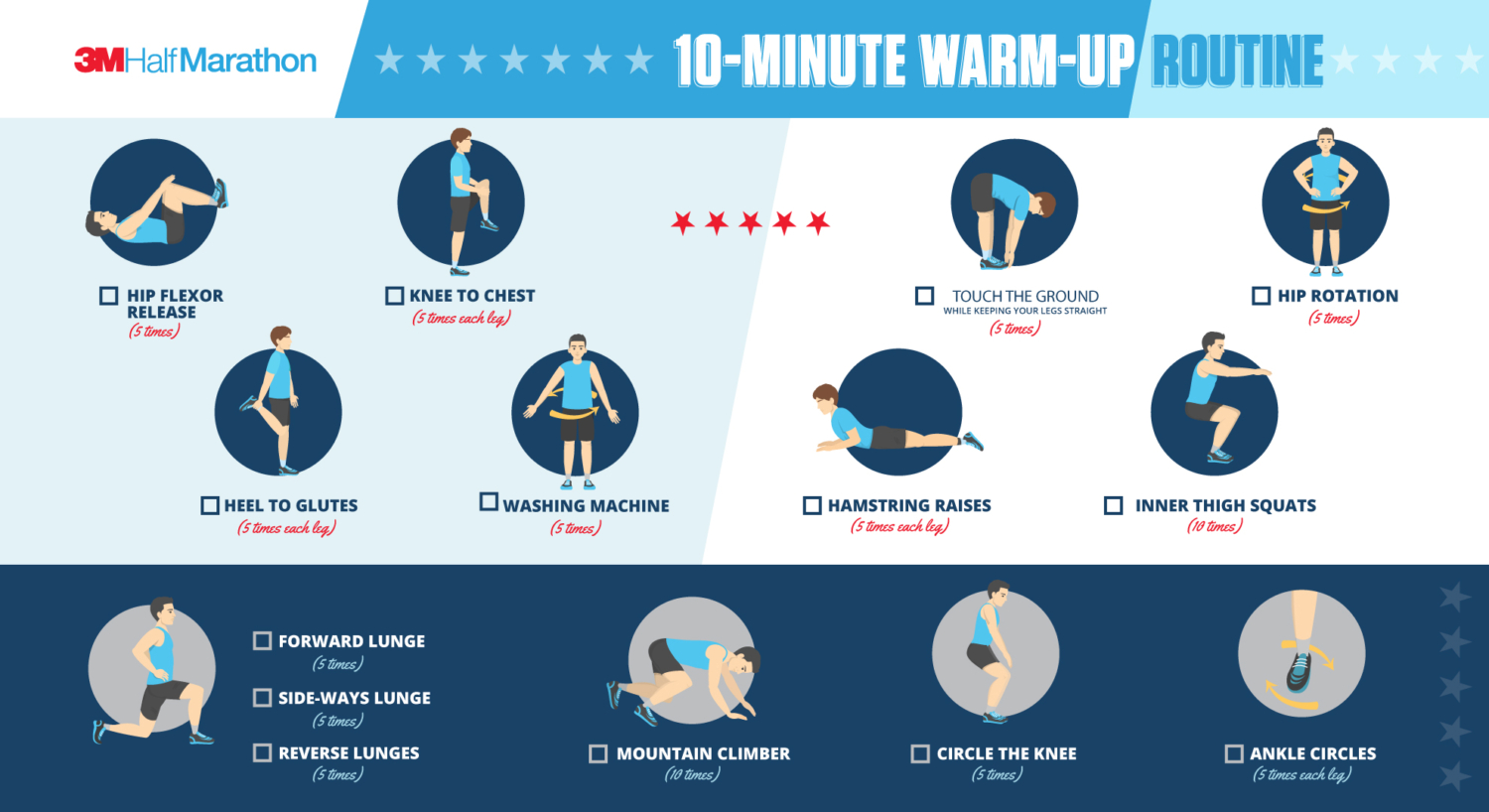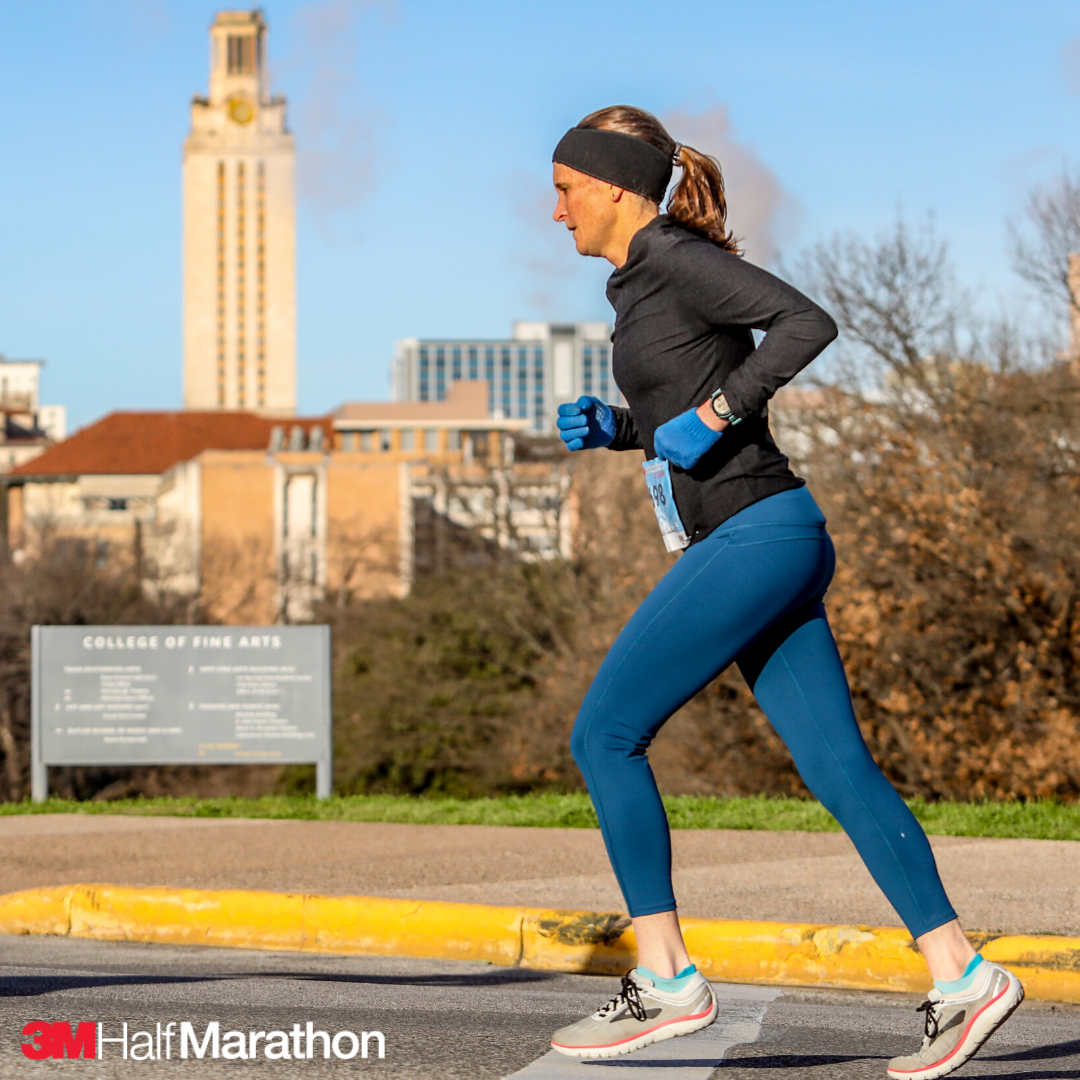Recover faster with our 6-step long-run recovery timeline
Your 3M Half Marathon training plan will include long runs which will progressively increase over time. They’re the core to building the endurance needed to achieve your goals. Just like any other run or workout, you need to recover and prepare for what’s next. This long-run recovery timeline will help expedite the recovery process, from the moment you stop your watch until you lay down for a well-deserved nap. Follow our advice, build it into your schedule, and make sure you’re ready for whatever is next on your training plan. Wait, before you even start the long-run recovery timeline, make sure you avoid these five simple training mistakes.
Pro tip: adjust the timeline as needed to fit your schedule.
Rehydrate (within 5 minutes)
Runners lose fluids during runs and workouts when sweating. This is the price you pay so your body can stay cool during the run. It’s important to drink at least 16 ounces of an electrolyte-enhanced drink (like Nuun Hydration) when you’re done. Drinking this will begin the rehydration process and restore needed electrolytes and nutrients Pro tip: have a drink ready before you begin that’s specifically for after your run.
Stretch and foam roll (within 5-15 minutes)
You’re pushing your body further and further, reward it with stretching and foam rolling. Whether you’re increasing your distance or lowering your time, you’re asking a lot of your body. Take care of the muscles that take care of you. Stretching and foam rolling allow fresh blood to flow to the muscles. This speeds up recovery and helps prevent lactic acid from settling in. It can also help you avoid the pain from shin splints. Pro tip: check out these other reasons runners love to foam roll.
Eat a snack (within 15-30 minutes)
Grab some fruit, beef jerky, or your favorite GU Energy Chews. Eat something that won’t upset your stomach or dry out your mouth. You need to replace the energy your body consumed during your long training run. Plus, it’ll give you a nice little energy boost. Keep hydrating!
Cool off (within 30-60 minutes)
Take a cold shower or jump in a cold body of water like Barton Springs (stay no more than 15 minutes). The cold water can help your body’s core temperature return to normal and reduce inflammation. If it’s cool outside or slightly windy, take your stretch session outside.
Eat a meal (within 1-2 hours)
Time to eat! By now your snack is wearing off and your stomach is beginning to rumble. Depending on your mileage, your body probably burned thousands of calories. Time to replace them! Grab something to eat, whether it’s a pre-cooked meal, something you prepare, or you go out to a restaurant.
Nap (within 2+ hours)
The ending to a perfect long run, a nap. You’ve stretched and foam rolled, eaten, hydrated, and showered. It’s time to let your body do some repair work. Find somewhere that’s dark and cool. A 30-60 minute nap is perfect, depending on what you have to do for the rest of the day. It’s not a bad idea to stretch/foam roll one more time and drink some more electrolytes before your nap.
Some runner’s recovery timeline might differ. You can adjust this to fit your schedule. But the core of this long-run recovery timeline will assist in repairs your body needs. This will help you get ready for whatever is next on your training schedule.


